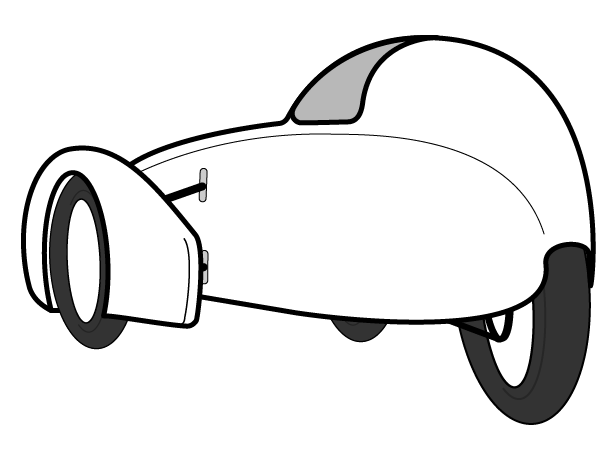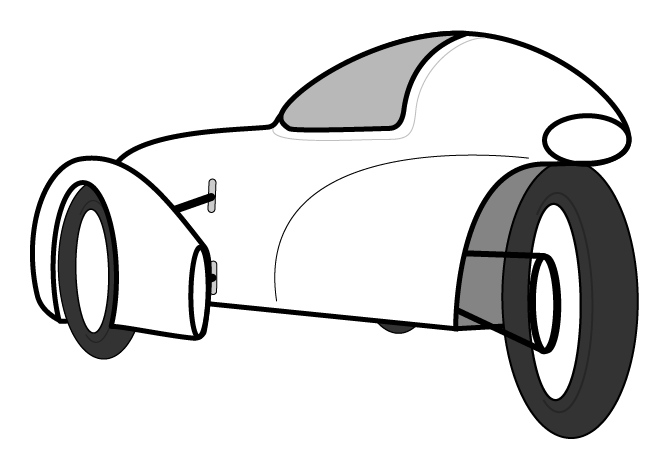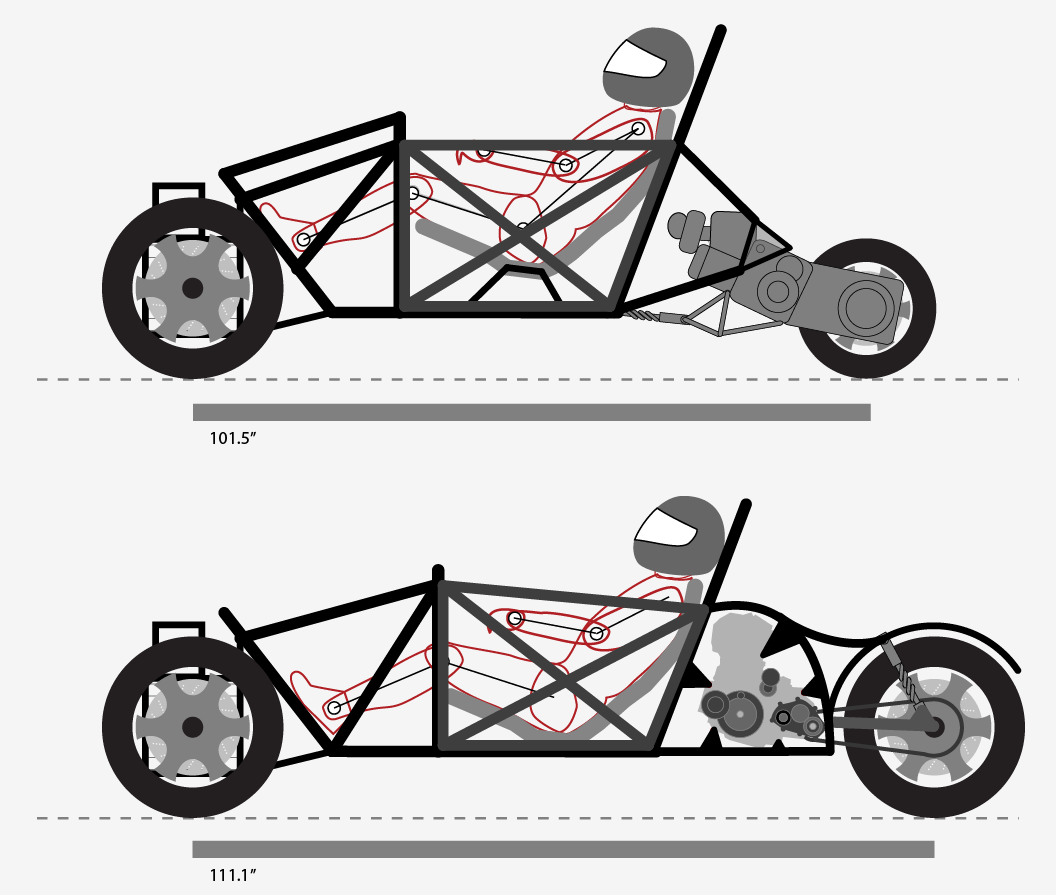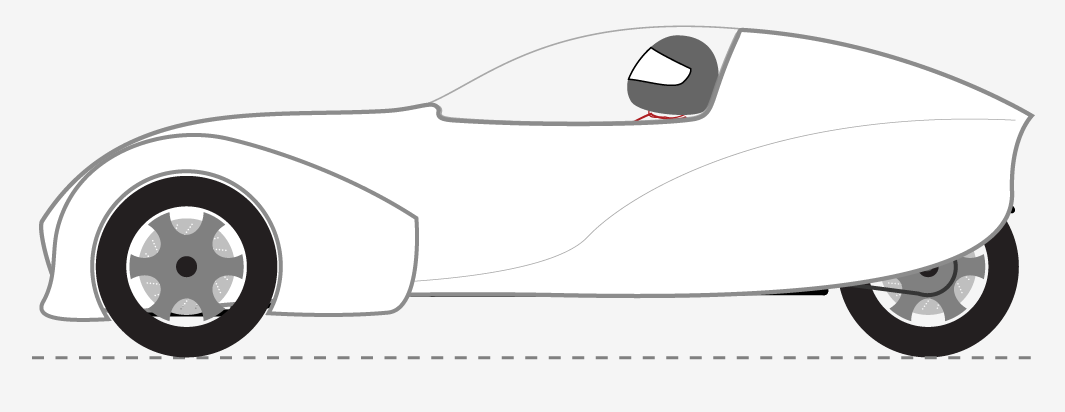Oft contributor and friend of Project Streetliner, Aaron, has more than once made the case for using the drivetrain off an ATV (or “4-wheeler” as we southern kids grew up calling them). At first blush, I’ve always hated the idea because I’m a scooter snob. I don’t know ATVs and I don’t care about ATVs. But there’s one big factor that makes Aaron’s case for the ATV drivetrain impossible to ignore: reverse. From his previous comment:
IMHO… I’d say to go with a small ATV engine for several reasons.
1) They are virtually identical to many motorcycle engines, except their gearbox has reverse, which will save you a lot of hassle later.
2) Many of the “manual shift” variety have an automatic clutch, which will gain you most of a scooter’s “twist-and-go” convenience while still keeping the ability to gear up simply by changing sprockets (something you can’t do easily with a scooter – see Craig Vetter’s woes with his Freedom Machine). Even if you decide to go with a CVT ATV instead of manual, you can still run a sprocket/chain off the bevel drive that normally drives the rear axle.
3) ATV engines are commonly larger bore single cylinders which are setup to generate a lot of low end torque, which will be useful after being geared up to your desired top speed. Many small displacement motorcycles don’t have a lot of torque and may have to be geared down to move a heavier vehicle then they were designed for as quickly as you’d like (especially if you decide to make it a 2 passenger trike).
4) Depending on what you decide to do about the front suspension, you may get many of the parts you need right off the engine donor.
5) If your EV desires grow, you can always retrofit it with one of the Motorcycle EV Conversion kits coming out lately. That option won’t be as easy if you start with a scooter engine/swing-arm/wheel.
6) And last, I don’t think the hp difference will be enough to limit you to surface street speeds with a gearbox to choose your final drive ratio. With a CVT or EV you have the problem of being “wound out” at your peak RPM and not able to accelerate further. Craig Vetter had this problem as well. With a gearbox almost any engine that will move you 55 with “power to spare” (as you dictated) will also get you to 70 for highway runs.
I really can’t argue with any of this. Especially with many of the “sport” ATVs on the market today, horsepower won’t be in issue. I wonder a little about just how these engines are tuned, given that mpg isn’t your primary concern off road. They might be set a lot richer to allow for higher performance. If their carbureted, that’s not so hard to fix, but if they’re EFI, which most are these days, then getting that re-mapped could be quite tricky. I really only have two concerns: weight, and form factor.
Weight is an obvious concern, as the less weight the Streetliner has to haul off the line, the more efficient it will be. Some of this can be overcome with gearing and aerodynamics, but the lighter the better is a good rule of thumb. I’m concerned about weight in the ATV primarily because it’s a 4WD vehicle. I only need to drive one wheel, so I’d effectively have a second output shaft and differential just getting lugged around with no purpose. The most mad scientist thing I can think to do with that second shaft would be to run an air conditioner compressor off of it or perhaps a second alternator. That has interesting connotations, but I’m still not sure.
The more troubling concern is that of form factor. What I’ve designed so far has a wheelbase about 4″ longer than my MINI. Granted, the MINI is not a big car by any measure, but getting much longer than that worries me in terms of low-speed maneuverability. I don’t want the thing to be so long it can’t easily park. The guys who build those impossibly long chopper motorcycles run into this all the time. Their stretched-out bike can barely turn around coming out of a parking lot without doing a 12-point turn. I know that’s hyperbole, but I still don’t want to go down that road if I can help it. The scooter drivetrain has not just an economy of engineering simplicity and bolt-on convenience, it has an economy of space. Without knowing more about the ATV powerplant, I’m not sure if I can cram it in behind the seat on the Streetliner the way I’d want to. I doubt it’s impossible, I just need more information.
So it’s certainly on the table. I need to get some measurements and figure out which ATVs would be good candidates. Looking around online, the tricky thing is finding one that isn’t shaft drive. For this to work, I really want to have the final drive be chain and sprocket so that I can adjust the end gearing as easily as possible. I guess we’ll see.
Any thoughts?



